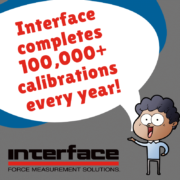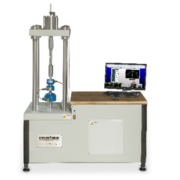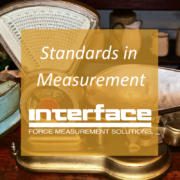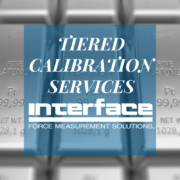System Level Calibration Validates Accuracy and Performance
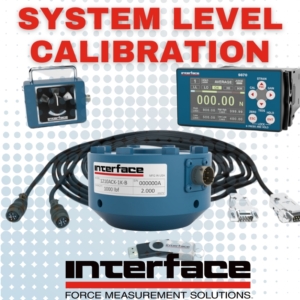 Interface strongly recommends when buying any force measurement sensor along with instrumentation that you request a system level calibration. The final step taken to confirm that a sensor and instrumentation are working properly together before leaving Interface is a system level calibration.
Interface strongly recommends when buying any force measurement sensor along with instrumentation that you request a system level calibration. The final step taken to confirm that a sensor and instrumentation are working properly together before leaving Interface is a system level calibration.
System level calibrations provide traceability and record for reference for validating performance and accuracy. It is important to review calibration certificates prior to use and for any troubleshooting. System level calibrations ensure that all system components, including connectors, cables, transducers, and instrumentation are ready to use out of the box.
Interface provides calibration to all individual force measurement components. A basic calibration for the load cell is performed and certified of how the transducer performs in isolation. Expert Interface Calibration Technicians always calibrate these devices to meet the design specification and the exact parameters outlined in the accompanying calibration certifications shipped with the part. A calibration certification characterizes the load cell performance across specific force range with different load points applied output from the load cell versus applied load, confirmed by the specification in voltage outputs, milliamps, or digital output types.
A system level calibration ensures that the performance of the transducer and instrumentation are operating as a system, together. A system level calibration and an associated certification proves the system pairing is functional and essentially plug-and-play ready.
The system level calibration is an important reference for traceability and troubleshooting for the entire system. It can help identify if a setting has been changed or if there is another issue that invalidated the system.
Interface can provide system level calibrations for load cells, torque transducers, multi-axis sensors and other measurement tools that are paired with indicators, amplifiers, USB, and digital instruments. Interface uses a very high quality NIST and NMI traceable mV/V transfer standard to ratiometrically scale or applied force to scale the system. We provide a separate digital indicator calibration certificate indicating how we scaled the instrument.
Interface guarantees our quality performance load cells, torque transducers, multi-axis sensors, and related instrumentation. We certify our products to meet or exceed the quality clauses outlined by the International Organization of Standardization (ISO).
Interface is A2LA Accredited for torque and force calibration in accordance with International Standard ISO/IEC 17025:2017.
From the time we designed our first load cells in 1968, we have been providing calibration solutions. We even calibrate other manufacturers load cells. Every year, Interface performs more than 100,000 calibrations. Every transducer’s calibration data is stored at Interface, providing a permanent archive. We utilize NMI Certified Gold and Platinum Standard reference load cells and our Interface Gold Standard Calibration Software for all calibrations.
ADDITIONAL RESOURCES
Instrumentation Selection Guide
Top Five Reasons Why Calibration Matters
Recap of Accurate Report on Calibration
